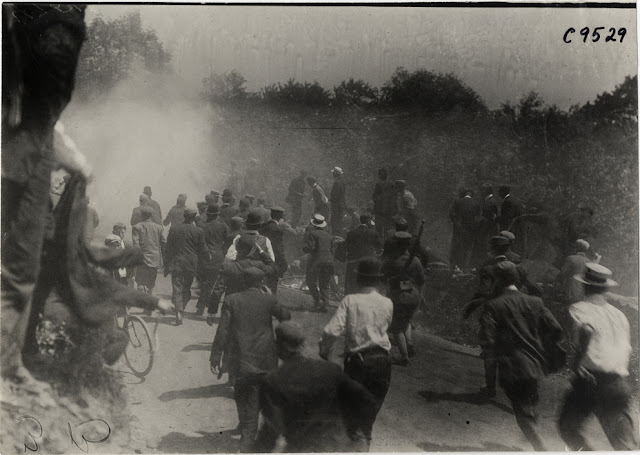The 1909 Dead Horse Hill Climb was not an especially successful event for Knox. Billy Bourque crashed during the try-outs, with newspaper accounts indicating he was "badly injured." It is believed that despite the injury he drove later in this event. He then went on to compete at Crown Point, Indiana just a week later, with Harry Holcomb as riding mechanician.
 |
Spectators arrive and find their spots along the course.
Hill Climbs were big events and part of the sales effort of manufacturers.
Image courtesy of the National Automotive History Collection, Detroit Public Library |
 |
| New York Times, 1909 |






















































